Inland Victoria and Melbourne 04-06/06/2011
Off to the mallee.
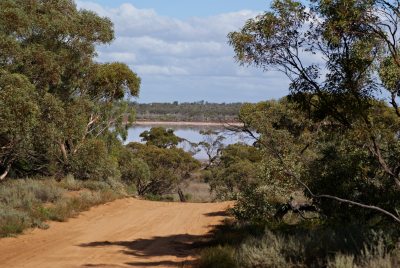
|
Day 1
I was nine birds short of reaching 500 on my list of birds seen around the world and Ed Williams offered a trip to the mallee where it would be fairly easy to pick up the required num ber and a few more besides. It was quite a drive from Melbourne to Sea Lake, so we left Friday night to drive through the evening. Inland Australia is currently sufferring a mouse plague, due to the wet weather inland this year. We passed thousands of mice on the way, many of them flattened on the roads. Despite driving through hundreds of kilometers of farmland, no owls were seen. They had probably filled up on mousy treats soon after sunset.
The next morning found us ready to go to nearby Lake Tyrell, a salt lake. The first lifers were quick in arriving - Blue Bonnet parrots and White-winged Fairy-wrens. The site is a good spot for Redthroat and Rufous Field-wren, but neither was present. Instead, we found Yellow-throated Miner and Pied Butcherbird.
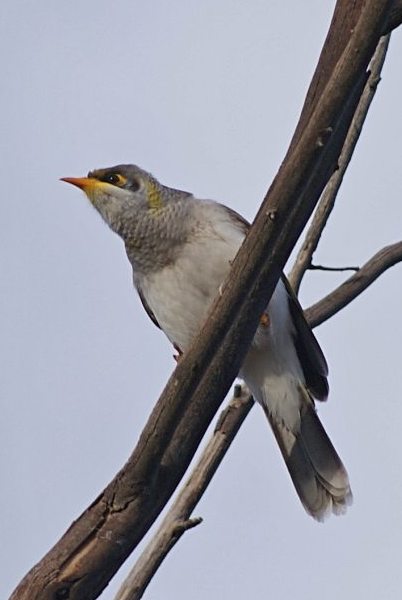
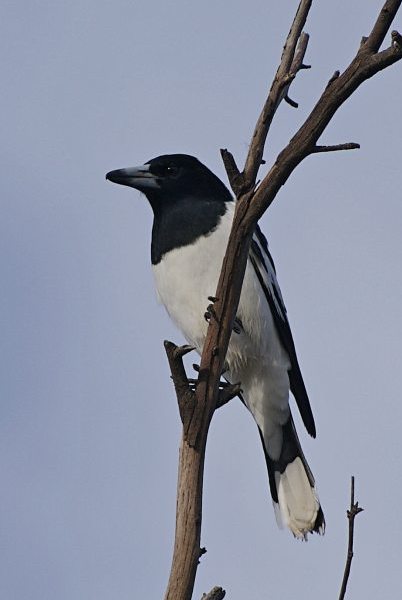
Yellow-throated Miner and Pied Butcherbird
The visit to the lake finished up with a pair of Australian Shelduck flying over. A quick detour on the route to a lookout over another part of the lake paid off handsomely: on the road down, we found Singing Honeyeaters and Australian Pipits. At the lookout, a flock of Zebra Finches were flying about, calling in their squeaky way. In the salt bush, White-fronted Chats sat of top of stalks and one of our target birds, the Rufous Field-wren showed itself at the edge of the path, darting in and out of cover with a second joining.
On to the next stop, with plenty of birds along the route, including Whistling Kite, Yellow-rumped Thornbill, Red-rumped Parrot, White-winged Chough, Noisy Friarbird and Australasian Grebe.
Eventually, we reached the Murray-Sunset National Park and picked up another lifer on the road in: the mallee subspecies of Australian Ringneck
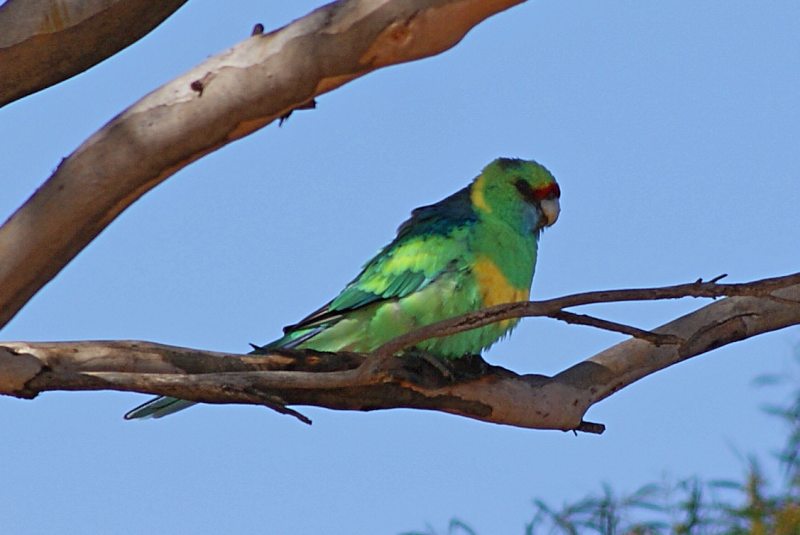
Australian ('Mallee') Ringneck
In the park, the drive to the picnic site was excellent: a group of Black-faced Woodswallows hovering and taking it in turns to line up on a tree trunk. The woodswallows were the 500th lifer and a good bird for the area, too. A small group of raptors - two Brown Falcons and a Black-shoudered Kite were busy mobbing each other in a nearby tree. Some Striated Pardalotes were in a gum, which Ed ID'd from the car by call alone. All birds so far, but a trio of Red Kangaroos hopped out of range when we approached and a Mulga Parrot was in a dead tree.
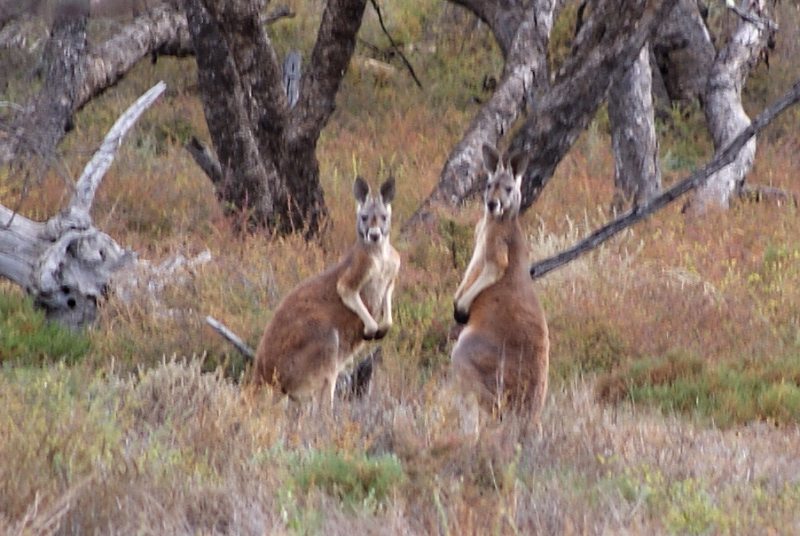
Red Kangaroo
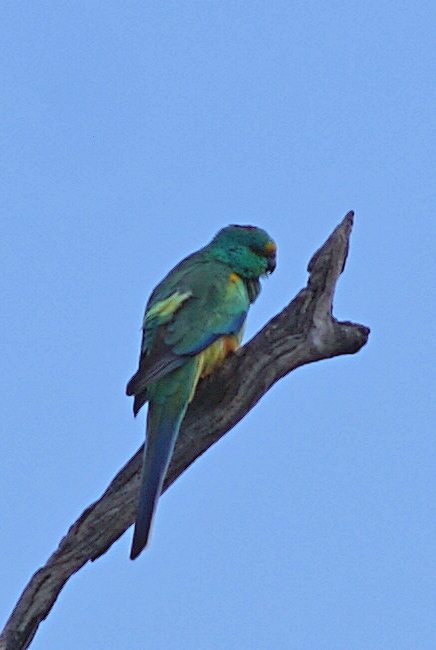
Mulga Parrot
After setting out on foot we found a large mixed flock of thornbills, including Buff-rumped and Inland Thornbills. One of our target birds showed nicely in a clump of grass: Striated Grasswren. Grasswrens are one of the more difficult groups of birds to see in Australia and the number of people who have seen all of the species is not high. Striated is one of the easier ones to find, but still takes a little work. A pair of Grey Shrike-thrushes and a Jacky Winter kept us company on the walk back. Near the car, a brief glimpse of a group of medium-sized birds and their squarks, whistles and warbles, led us to a flock of White-browed Babblers, which were quite wary of us. Soon after, we saw a family of Splendid Fairy-wrens with the male in non-breeding plumage.
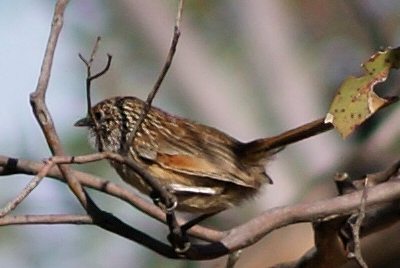
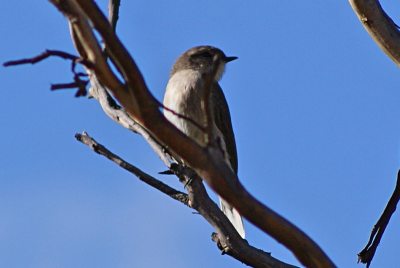
Striated Grasswren and Jacky Winter
Driving back out of the park, a quick stop found Brown Treecreeper, Rufous Whistler and Southern Whiteface in a small area.
The next stop was Hattah-Kulkyne National Park, bordering the northern end of Murray-Sunset. We'd had tip-offs from a reliable source on several good birds here and we took a drive around the park before setting up camp for the evening. The drive paid off - a flock of 15 Regent Parrots, lovely birds with bright golden bodies, flew in nearby. Not long after was one of the birds I'd always wanted to see in the wild: Emu!
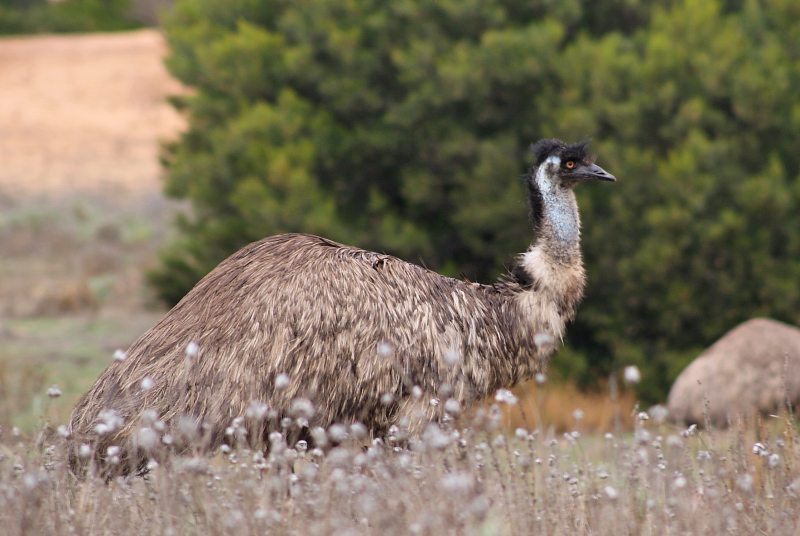
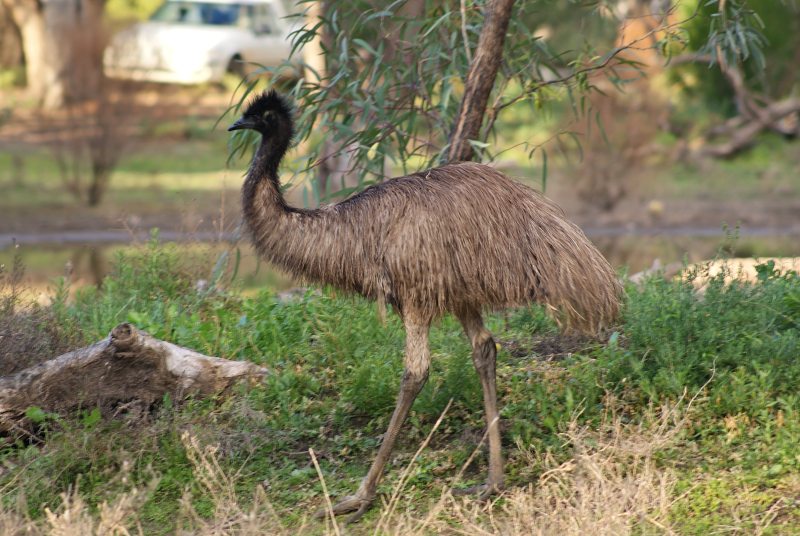
Emus! Adult left, juvenile right.
A bit more driving around gave us Yellow Rosellas (a yellow form of the Crimson Rosella), Little Pied and Great Cormorants, White-plumed Honeyeater, Grey Teal, Laughing Kookaburra and Apostlebirds.
After setting up camp and cooking dinner, we went for a drive to see what was about after dark. Quite soon we found some frogs: Eastern Banjo Frog (also, wonderfully, known as the Pobblebonk), Spotted Marsh Frog and Perron's Tree Frog. There were also a large number of Brush-tailed Possums and a feral cat. The star of the evening was an Australian Owlet-nightjar sat on the road.
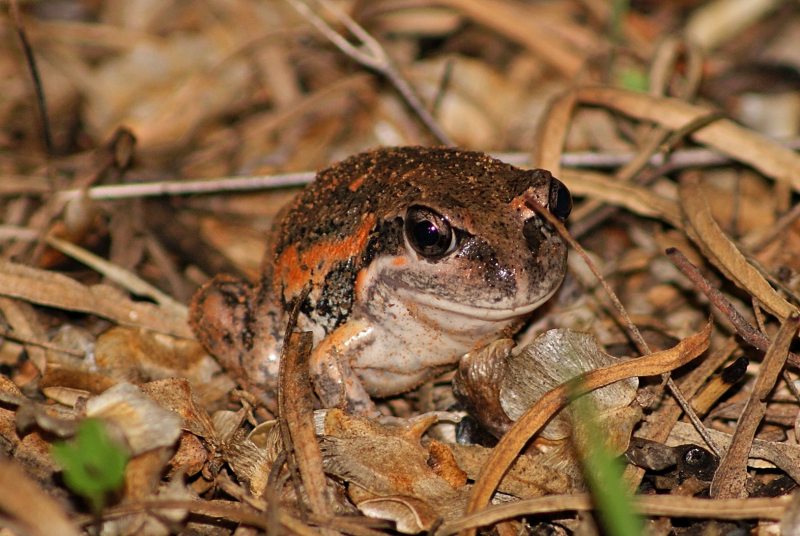
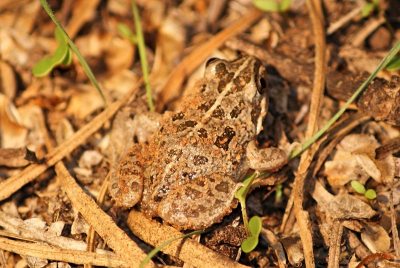
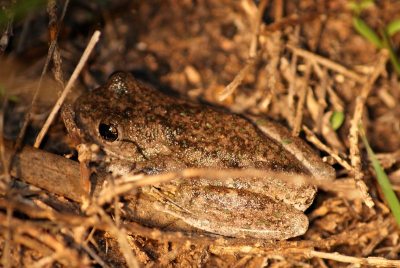
Eastern Banjo Frog, Spotted Marsh Frog and Perron's Tree Frog
The end of the evening was marked by a distant Southern Boobook calling, some animals snuffling around the tent and the alternating snores of two grown men.
> Day two













